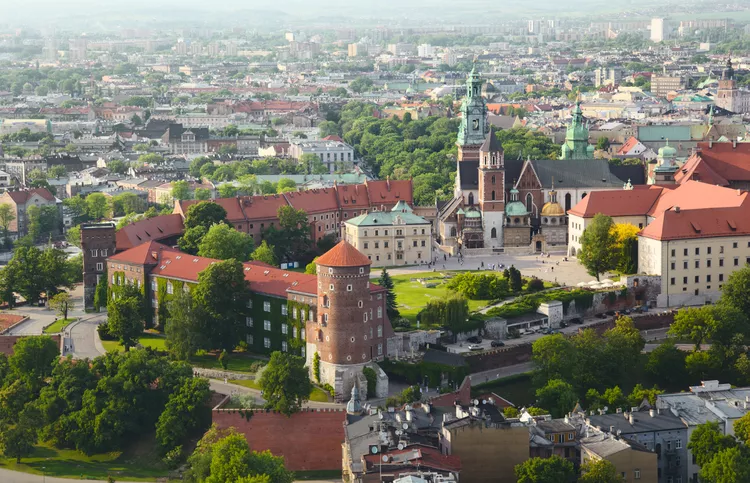Summary
Wawel Castle: A Historic Landmark in Krakow
Meta Description: Explore Wawel Castle in Krakow, a significant historical site known for its rich architecture, royal history, and archaeological treasures. Discover when to visit and what to see at this iconic Polish landmark.
Wawel Castle is one of Krakow’s must-see sights and an important Polish landmark. As Polish castle complexes go, Wawel is large and significant. This enclosed fortification, which includes palaces and a cathedral, overlooks the Vistula River on a raised rock outcropping.
History
Like many castles in Eastern Europe, the site of Wawel Castle was identified by early people as a location that could offer strategic defensive benefits. With the river on one side, and the rise of the hill providing views into the distance, inhabitants of Wawel Hill could see intruders approaching and defend themselves effectively.
In a similar fashion to other fortresses across Poland and Europe, the Wawel Castle that stands today is made up of structures from various eras. Archaeological evidence suggests that Wawel Hill has been used as a settlement since the 7th century A.D. This historical site served as a headquarters for Poland’s rulers and nobility until significant European events altered its role. Rulers have historically added to the Wawel Castle complex to accommodate changing architectural styles and their own preferences. When Poland had the opportunity to restore Wawel Castle, damaged structures were returned to their former glory.
What to See
Upon arriving, visitors ascend Wawel Hill via a ramp and enter the grounds through a gate. The grounds are fascinating to explore—you can enjoy breathtaking views over the Vistula River, examine diverse architecture, identify the outlines of structures that are no longer standing, and envision how Wawel Castle appeared centuries ago.
Some of Wawel’s state rooms and private royal chambers are accessible to the public, showcasing original interior design elements, Renaissance paintings, and exquisite furnishings. Rooms, such as the Planet Room, are named for their decorative features, while others are named based on their intended purposes. The private areas include guest bedrooms and rooms featuring panoramic views of Krakow.
The crown treasury and armory exhibitions contain remarkable artifacts from the era of Polish kings, including a coronation sword, jewelry, and an array of historical weapons used for defensive, ceremonial, and tournament purposes.
Archaeology enthusiasts should not miss the opportunity to descend into Wawel’s basement, where you can uncover items from excavations conducted on Wawel Hill. This exhibition reveals an array of objects from daily life at the castle as well as architectural remnants from deteriorated structures.
Additional points of interest at Wawel Castle include the well-known Dragon’s Den, a medieval tower, and the beautifully maintained royal garden.
Wawel Cathedral stands out as a must-see feature within the castle. This cathedral has served as the site of royal coronations and acts as a burial place for Polish kings. The richly decorated chapels, dedicated to past rulers, house stunning art pieces and sacred relics.
Visiting
Wawel Castle is often crowded with tourists during the summer months; however, the off-season presents a more pleasant experience. Due to the delicate nature of the architecture and artifacts, a limited number of visitors can enter the castle each day. Therefore, it’s advisable to visit early during the high season to avoid missing out on ticket availability. April is a particularly good time to explore, as the weather tends to be mild.
Separate tickets for the exhibitions must be obtained at the visitor center located on the castle grounds. It can be helpful to visit the castle’s official website to view a map of Wawel and determine which exhibitions pique your interest. Be aware that some exhibitions require a tour guide, with guidance included with your ticket purchase.
It’s also essential to check the castle website for information regarding admission times, prices, and seasonal availability. Some exhibitions may be closed during winter months, while others are accessible year-round. Certain exhibitions offer designated free admission days, while others do not. Additionally, exhibition hours vary with seasonal changes.
Please note that even on free admission days, a special free admission ticket is necessary for entry into the exhibitions. This measure helps the conservation team manage visitor numbers to the historic architecture effectively.





